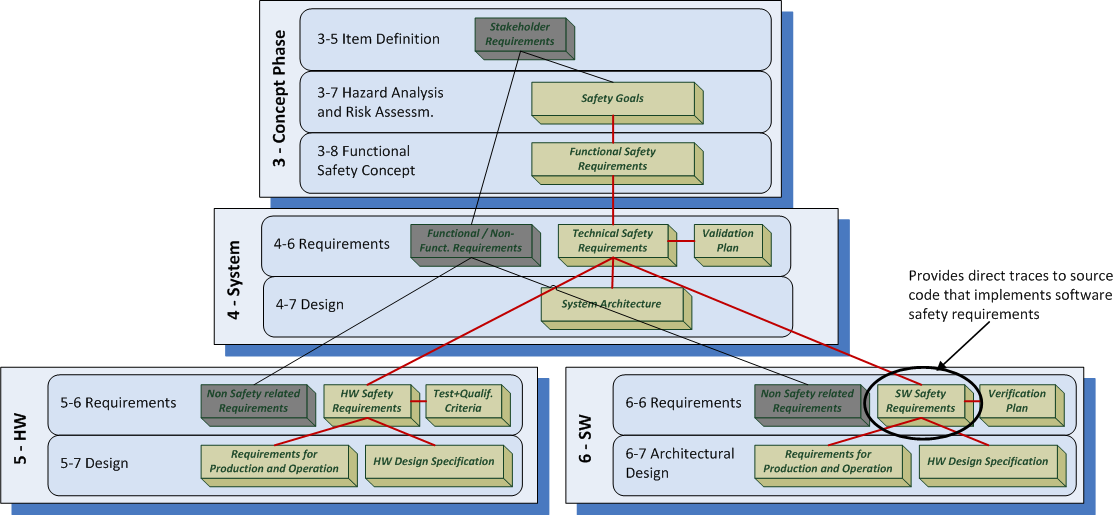Using Source Traces for Safety Compliance
Source traces are designed to be used in a functional safety environment. For more information on how to use Windchill RV&S in safety related development, see the functional safety documentation available on the PTC eSupport Portal (https://www.ptc.com/en/support).
Source traces have a specific value in safety critical software applications where problems pose a significant risk to the business and extra precautions and assurances are required. Non-compliance with safety standards may also prevent a product from being allowed in the market, resulting in a loss of revenue. Functional safety standards such as ISO 26262 and IEC 61508 require rigorous reporting and auditing. Tracing directly from requirements to source is a key capability to insure the software produced is authored and verified consistent with the stated requirements.
The following diagram illustrates the traces from requirements to design specifications required to comply with ISO 26262.
Trace Relationships in ISO 26262 (focus on specification)

Hand coded source members benefit the most from source traces, whether the code is implemented from a specification or from a model. Using source traces ensures that the code development process is subject to audit and compliance standards. Code generated directly from a model is compliant as long as the code generating tool is compliant.